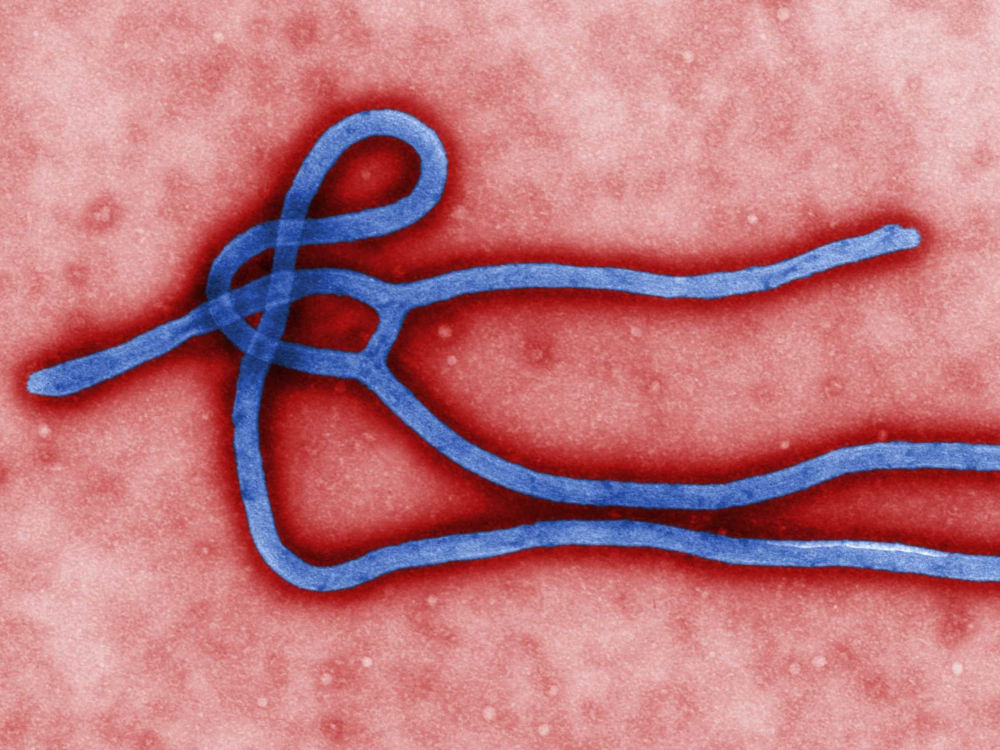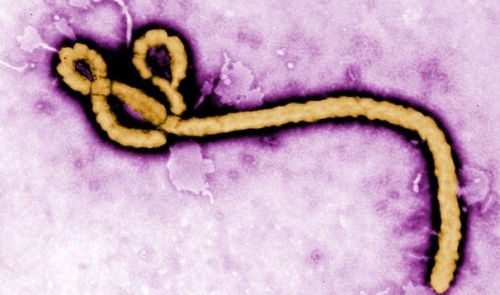Ebola virus disease (EVD), formerly known as Ebola hemorrhagic fever is a severe, often fatal illness in humans. EVD outbreaks have a case fatality rate of up to 90 percent. EVD outbreaks occur primarily in remote villages in Central and West Africa, near tropical rainforests. The virus is transmitted to people from wild animals and spreads in the human population through human-to-human transmission. Fruit bats of the Pteropodidae family are considered to be the natural host of the Ebola virus.
Ebola first appeared in 1976 in two simultaneous outbreaks, in Nzara, Sudan, and in Yambuku, Democratic Republic of Congo. The latter was in a village situated near the Ebola River, from which the disease takes its name. Although non-human primates have been a source of infection for humans, they are not thought to be the reservoir but rather an accidental host like human beings.
Transmission
Ebola is introduced into the human population through close contact with the blood, secretions, organs or other bodily fluids of infected animals. In Africa, infection has been noticed among those handling infected chimpanzees, gorillas, fruit bats, monkeys, forest antelope found ill or dead or in the rainforest. Ebola then spreads in the community through human-to-human transmission, with infection resulting from direct contact (through broken skin or mucous membranes) with the blood, secretions, organs or other bodily fluids of infected people, and indirect contact with environments contaminated with such fluids. Men who have recovered from the disease can still transmit the virus through their semen for up to 7 weeks after recovery from illness.
Health-care workers have frequently been infected while treating patients with suspected or confirmed EVD when infection control precautions are not strictly practiced.
Signs and symptoms
EVD is a severe acute viral illness often characterized by the sudden onset of fever, intense weakness, muscle pain, headache and sore throat. This is followed by vomiting, diarrhoea, rash, impaired kidney and liver function, and in some cases, both internal and external bleeding. The incubation period, that is, the time interval from infection with the virus to onset of symptoms is 2 to 21 days.
Diagnosis
Before a patient is diagnosed as infected with EVD, one should rule out malaria, typhoid fever, shigellosis, cholera, leptospirosis, plague, rickettsiosis, meningitis, hepatitis and other viral hemorrhagic fevers like dengue, yellow fever and kyasanur forest disease etc.
Ebola virus infections can be diagnosed definitively in a laboratory through several types of tests:
Antibody-capture enzyme-linked immunosorbent assay (ELISA)
Antigen detection tests
Serum neutralization test
Reverse transcriptase polymerase chain reaction (RT-PCR) assay
Electron microscopy
Virus isolation by cell culture.
Samples from patients are an extreme biohazard risk; testing should be conducted under maximum biological containment conditions.
Vaccine and treatment
There is no specific treatment nor is any licensed vaccine for EVD available. Several vaccines are being tested, but none are available for clinical use. Severely ill patients require intensive supportive care. Patients are frequently dehydrated and require oral rehydration with solutions containing electrolytes or intravenous fluids.
Prevention and control
No vaccine against Ebola Virus Disease is available. Routine cleaning and disinfection of pig or monkey farms (with sodium hypochlorite or other detergents) should be effective in inactivating the virus.
If an outbreak is suspected, the premises should be quarantined immediately. Culling of infected animals, with close supervision of burial or incineration of carcasses, may be necessary to reduce the risk of animal-to-human transmission. Restricting or banning the movement of animals from infected farms to other areas can reduce the spread of the disease.
As this viral outbreak in pigs and monkeys have preceded human infections, the establishment of an active animal health surveillance system to detect new cases is essential in providing early warning for veterinary and human public health authorities.
In the absence of effective treatment and a human vaccine, raising awareness of the risk factors for Ebola infection and the protective measures individuals can take is the only way to reduce human infection and death.
India and EBOLA
There is a risk the deadly virus could be imported into the country if the large population of Indians working in the four affected West African nations returns. There are nearly 45,000 Indian nationals living and working in Guinea, Liberia, Sierra Leone and Nigeria – where an outbreak of the disease has killed 932 people.
While the risk of Ebola virus cases in India is low, preparedness measures are in place to deal with any case of the virus imported to India. Government has advised against all non-essential travel to the four countries, and authorities will screen travelers who originate from or transit through affected nations, and track them after their arrival in India.
The government has also set up facilities at airports and ports to manage travelers showing symptoms of the disease. State authorities have been instructed to designate hospitals with isolation wards for response to possible cases and to stock personal protective equipment.







